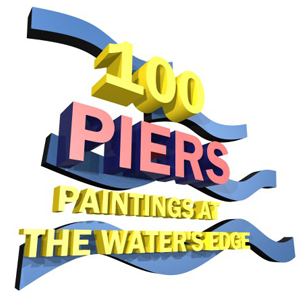OPENING OF THE SOUTH BLACKPOOL JETTY.
Saturday last saw the opening of the South Blackpool Jetty, an undertaking which has been in hand for upwards of a couple of years. The promoters of the scheme were confident that it would prove as beneficial for the south part of the town as what will now be called the “old pier” was for the north, and accordingly, having launched their design to the public. The only opponents were the directors of the former pier company, who naturally regarded the scheme with some degree of jealousy. The works sought to be authorised were—a promenade, pier, jetty, and landing place, and all necessary works and conveniences for the embarking of passengers, goods, and merchandise, and other purposes. The particulars of the scheme were submitted to the Board of Trade, and that body entertained and considered objections founded on alleged injury to public interests or alleged violations of admitted principles. In March, 1866, the Board of Trade reported favourably on the proposed works. Blackpool thus secured the additional attraction of a second pier, and no time was lost in prosecuting the work. The contract for the erection of the new pier and jetty was given to Messrs. Robert Laid law and Son, of Glasgow and the first pile was screwed in July, 1867. The steady increase of visitors to Blackpool since the formation of the company still more convinced the directors of the desirability of the new pier being erected. No one could doubt that a new jetty, for the south end Blackpool, would be a great success. The new pier, as opened on Saturday, may be described as follows —
This capital construction is fraught with exceptional and remarkable features. Varying in design from all previous marine structures, it forms an object in the shore view exceedingly picturesque and effective. It is composed of wrought iron and timber. The entrance is on an abutment sixty feet in width, where there are gates, toll-houses, waiting and retiring rooms. In the centre, for the accommodation of visitors, there is a pure water fountain. From this point the main promenade or pier proper commences and extends to the pier head. There are seats each side, the whole length of the promenade, together with twelve recesses, containing shops for fancy articles and refreshments. The promenade and recesses are supported on clusters of piles and arches, the whole being of wrought iron plates, quite novel in design and very great strength. The pier head is composed of strong timber. There are erected thereon two large waiting, reading, and refreshment rooms, and commodious shelter and wind guard. Two sets of stairs are so arranged that visitors can have easy access to gangways on a lower level than the main promenade, and from which they can embark upon or disembark from steamers and pleasure boats at high water. These gangways slope gently seaward, and, at the end of the pier head, they join what has before been named the lower promenade. It is of less width than main promenade, and is so arranged that steam and pleasure boats can ply with ease and safety at all such other times of the tide, that they cannot conveniently do at the pier head. At the extreme head of the jetty is a beacon light, required by the authorities of the Trinity House.
On Saturday the number of visitors was considerably in excess of previous seasons in the month of May, no doubt increased by the early approach of Whitsuntide, which, in this county, is generally kept by the industrial classes as a holiday time. The pier was thrown open at ten o’clock to the public, at a charge of one penny per person, but during the morning not many persons went through the turnstile, but the number was increased in the afternoon, when the pier was thronged with visitors. The pier was ornamented with branches of evergreens, and with bannerets which floated at intervals, and presented a very lively and agreeable appearance. At the sea end there had been elected a kind of triumphal arch, covered with green branches, and forming an appropriate pendant to the whole. Soon after ten o’clock the band of the 3rd Lancashire Militia marched on the pier, having arrived from Preston by the 9:00 train. The band at once took up a position about midway on the pier, and discoursed some capital music in a most excellent style to the delight of those who listened. Soon afterwards Bridge’s “Christy Minstrels” made their appearance, and they amused the populace with their funny sayings during the intervals of the performances of the militia. At two o’clock, the Lancashire Artillery Volunteers, 35 in number, marched on the pier, headed by their commandeering officer, Captain Hanks. The only sign of public demonstration was the marching of the militia band, and after having exhausted themselves of the programme, went to the Hotel, for dinner. During the afternoon the pier was much thronged, and the newly-appointed toll collectors had a busy time of it in taking the pennies from the hundreds who, almost to the desertion of the old pier, west anxious to patronise the new one.

